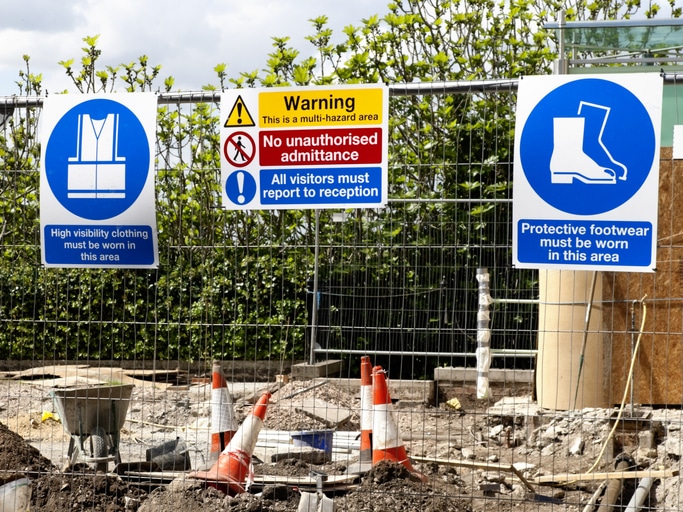Construction sites are full of potential hazards; it is important for builders to be aware of the most common types of hazardous materials so that they can take proper precautions. Speaking with a hazardous materials assessment professional is a helpful step in understanding the dangers and procedures for working on a building site that has contaminated or dangerous materials.

To actively protect your business, employees, and operations, it’s vital to know what threats are present on the jobsite – even the ones you can not see. Often, the greatest dangers are invisible to the naked eye – and that’s why hazardous materials assessments are important. By having one conducted, you will ensure the right measures are taken.
The three most common types of hazardous materials found at building sites are asbestos, lead, and mould. Here, we will go into depth about what the threats of these materials are, and how you can best avoid them.
Asbestos
Asbestos is a naturally occurring mineral that was once widely used in construction due to its fire-resistant properties; it is most commonly found in insulation and fireproofing materials, and exposure to asbestos fibres can cause serious health problems, including lung cancer.
Builders should take care to avoid disturbing materials that may contain asbestos. If asbestos-containing materials must be removed, builders should hire a certified asbestos abatement contractor to do the job.
Lead
Lead is a metal that can be harmful if inhaled or ingested, and is often found in paint and plumbing fixtures. Lead poisoning can cause a variety of health problems, including learning disabilities and behaviour problems in children.
Builders should take care to avoid disturbing lead-based paint. If lead-based paint must be removed, builders should hire a certified lead abatement contractor to do the job. In addition, builders should use lead-safe work practices when working with plumbing fixtures that may contain lead.
Mould
Mould is a type of fungus that can grow indoors or outdoors, and is most frequently found in damp or humid areas. Mould spores can cause respiratory problems and other health problems in people who are allergic to them.
Builders should take care to avoid exposing building occupants to mould spores. If mould is present, builders should hire a certified mould remediation contractor to remove it. In addition, builders should address the source of the moisture problem to prevent mould from returning in the future.
Conclusion:
Construction sites are full of potential hazards. It is important for builders to be aware of the most common types of hazardous materials so that they can take proper precautions. The three most common types of hazardous materials found at building sites are asbestos, lead, and mould.
By taking care to avoid disturbing these materials by getting a hazardous materials assessment and hiring certified contractors to remove them when necessary, builders can help protect themselves and the occupants of the buildings they construct from these potentially harmful substances.
Alberta Safety & Environmental Services (ASE Services) is one of the most reputable providers of Hazardous materials assessment and hygiene inspection services—including asbestos, lead, mould, mercury, and silica detection, as well as industrial hygiene testing for grow ops and other facilities.
With a background in Alberta’s Occupational Health & Safety Commission and professional project management skills, our qualified staff can provide reliable handling of air quality and industrial hygiene from initial industrial inspection all the way to remediation programs. Whether just for a permit, or in-depth air quality control, we can help. Feel free to reach out and secure air quality and hygiene requirements for your building.
